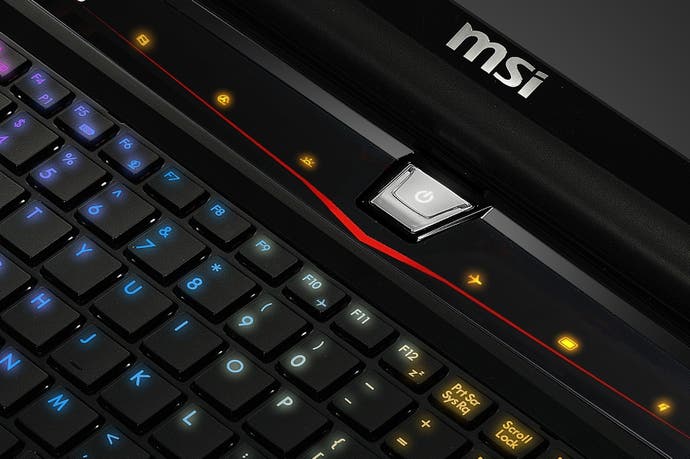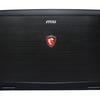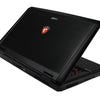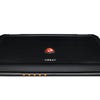MSI GT70 2PE Dominator Pro with GTX 880M review
Not just a next-gen console beater - this gaming laptop could give your desktop PC a run for its money too.
Right now, the Nvidia GTX 880M graphics chip is the most powerful hardware of its kind available for gaming notebooks. Tied to a mammoth 8GB of GDDR5 memory and utilising the same Kepler GK104 processor that drives some of the best desktop GPUs, the promise of a high-end PC experience in a laptop is more potent than ever. But a bigger question looms larger: with MSI's GT70 2PE Dominator Pro laptop hosting this top-end part, could it be in a position to topple the PS4 and Xbox One in terms of performance - and at what cost?
The specs are quite astonishing on paper, but it's worth highlighting that it builds on a strong existing foundation. The 880M is fashioned through the same 28nm manufacturing process as last year's Kepler-based 780M, but with Nvidia's claims to a 15 per cent boost in overall performance. This arrives by way of a single bump in core clock speed, from 823MHz to 954MHz plus the added ability to boost up to 993MHz where thermal headroom allows.
That's the lot for core changes, save for one other eye-opening upgrade. Surprisingly, the 880M now has the option to work with up to 8GB of GDDR5 RAM (clocked at 5GB/s), as opposed to being locked at the previous limit of 4GB. Linking it all together is a 256-bit memory bus - at which point the figures begin to sound equatable to the PS4's memory setup. Alas the 880M does fall short of the Sony console's 176GB/s memory bandwidth, with an offering of up to 160GB/s - however, it has the advantage of not having to share memory access with the CPU, in theory giving it a distinct advantage. In addition, it allows fill-rate flexible enough to support 1080p in even the most cutting-edge games.
In theory then, we have exceptional rendering power available, plus a memory allocation that out-strips both consoles and most gaming GPUs. At this point it's all about the rest of the hardware in the package, and in the MSI GT70 2PE Dominator Pro it's clear we have a highly potent set-up.
The laptop itself is thankfully well-built, with a 17.3-inch screen that defies some of the nastier stereotypes attached to LED-backlit panels. Wide horizontal viewing angles still produce a faded perceived image, but with eyes central, the colour contrast is every bit as impressive as the MSI GE60 laptop we reviewed last year. Colours are vibrant, and unlike the thoroughly disappointing LCD panel on the smaller GE40 model, brightness can even be cranked up for comfortable outdoors use. The anti-glare coating also helps massively here.
Physically, it's a thick and sturdy piece of kit with a brushed aluminium finish. It measures in at 55mm tall at its hinge, with a SteelSeries chiclet keyboard filling the lower half (pepped up with multi-colour backlighting). Its push for depth is a wise move that allows better ventilation from the back and sides, and also a comprehensive input range to its rim. To count, there are single HDMI, VGA and DisplayPort connections that in concert allow for up to three monitors at once. Turning the corner, there are two USB 2.0 ports, and appropriately three USB 3.0 inputs, a Blu-ray drive, and SD slot, and a line of audio connectors. Build quality is superb all-round, although as with other laptops in this 17-inch bracket, the keyboard features a very slight flex towards its centre.
Power, heat, and noise - each in equal amounts the bane of pushing towards the bleeding edge of mobile graphics technology - are facets that bear mention with this laptop. Loaded with an Intel i7-4800MQ CPU rated to a TDP (thermal design power) of 47W, and the GTX 880M's own TDP counting in at over 100, there's plenty for the battery to contend with here. To combat this, we have a 7800mAh lithium-ion block, promising an impressive 87 watt-hours. In practice that gives us three hours and 30 minutes of general desktop use - at 50 per cent brightness, 50 per cent volume, and with Windows 8's power profile set to balanced.
But once we start pushing Nvidia's graphics hardware with Crysis 3's Welcome to the Jungle stage, that off-mains number plummets sharply, right down to 55 minutes. It's expected, but still sobering in the context of its 90 minute recharge time. Advertised as more of a desktop replacement, it makes more sense to plug the GT70 into the mains for any serious gaming sessions. Even so, to aid battery-only use future GTX 8-series drivers come bundled with a Battery Boost power saver feature, advertised to double the play time out in the wild.
"The pay-off is huge for the GTX 880M's in-game performance, with an unerring lock on 60fps during gameplay trumping the PS4 and Xbox One."
This feature is still in its infancy, but soon everything will be mediated through Nvidia's GeForce Experience program. Setings are dialled back automatically on a per-game basis to prioritise battery life over performance, though this can be customised manually through a slider - ranging between battery life and performance. Another of the options is a permanent frame-rate cap of your choosing, which spares a renderer from working overtime on excess frames in low-demand games.
The issue of thermal and acoustic output is a more glaring issue than power, however. Going from 40 degrees Celsius when idle, the GPU hits a recorded peak of 91 degrees when stress-tested with a sequence of Metro: Last Light benchmarks on maximum settings. It's enough to cue the highest velocity fan speeds, which essentially drowns out all sound from its otherwise well-driven speakers. All in all, it creates a strong argument for plugging in sound-isolating headphones when gaming with this machine.
For the actual in-game experience, the pay-off is huge though. To put the power of the GTX 880M into perspective, we play through Battlefield 4's most strenuous segments and compare them directly with performance on PS4 and Xbox One. And helpfully, to avoid bottlenecking the graphics chip, the laptop sports a quad-core Intel i7-4800MQ CPU clocked at 2.7GHz (with boosts up to 3.7GHz), 16GB of DDR3 RAM, and with the game running straight from a 256GB SSD. We also produce all of our test results using the latest Nvidia driver available, listed as revision 332.73.
With high settings at 1080p already producing a monotone 60fps on the 880M, we push the boat out a bit further by adding ultra quality textures too. Even with this addition it's rarely swayed from the mark, suffering from just two noteworthy dips during the entire test, while the PS4 (running natively at 900p) and Xbox One (at 720p) regularly slip into 50fps territory. Our first drop belongs to the South China Seas section, where a carrier ship is ripped apart to cause the 880M to briefly hit 52fps. It's a modest drop compared to the lengthy stretch at 48fps on PS4, and the Xbox One's lengthy languish at just above 40fps.
| MSI GT70 2PE Dominator Pro | |
|---|---|
| Crysis 3, High, 2x SMAA | 39.3FPS |
| Tomb Raider, High, FXAA | 103.1FPS |
| Metro Last Light, High, SSAA off | 48.7FPS |
| BioShock Infinite, Very High, Post-AA | 89.4FPS |
| Hitman: Absolution, High, 8x/2x MSAA | 29.2FPS/49.3FPS |
| Thief, High, FXAA, SSAA | 47.5FPS |
For gameplay, however, these frame-rate troubles go away for the Nvidia chip, and there's nary a blip southwards of 60fps. It even holds strong during one giant oil rig explosion at the centre of the Fishing in Baku campaign stage, where drops on PS4 and Xbox One are aggressive sub-50fps affairs. The only sign of weakness comes during a second set-piece moment, where a building collapses, causing the 880M to hit its lowest point at 36fps. It's an anomaly given its resilience in every other scenario though, making it clear that any tipping point in the power feud between home consoles and laptops has passed.
Next up, we get a broader sense of the Nvidia chip's strengths by running benchmark tools from relatively new titles - one extra addition being Thief. Unlike Bioshock Infinite, this Unreal Engine 3 game gets bogged down by visual features such as tessellation, giving us a reading largely below the 40fps line as we press down a fortified main road. More astonishing is the huge variance in frame-time readings, which constantly fluctuates between 20 and 45ms. This is due to the pacing of frames by the game's renderer rather than any specific issue with the GTX 880M, causing an off-kilter rate of controller response. Careful settings management is required with Thief to get anything like a consistent 60fps experience.
As well as a respectable run on high settings, we also run Metro: Last Light at very high with SSAA engaged, effectively running at a much higher internal resolution than 1080p, with the image scaled down to fit. This allows the GTX 880M to be put in the same bracket as our full desktop GPU tests, where the results are startling - the chip reeling in a 26.1fps average. This is incredibly close to the 26.5fps possible on a GTX 670, from just two years past. It does, however, fall short of the GTX 770's healthy 33.5fps reading, though as a ballpark contender this still sets a high standard for discrete GPUs.
"Short of dropping all settings to low, achieving perfectly fluid 60fps performance from Crysis 3 remains just out of reach."
Another addition to our series of benchmarks is the final on-rails section to the Welcome to the Jungle stage in Crysis 3. This provides us with a whistle-stop tour through an explosive battle that pushes the 880M through some shaky peaks and troughs. That said, we're pleased to find there's no drop below 30fps at all here. It runs the gamut on the graph, so in theory, a frame-rate lock to that figure would provide a much smoother experience.
Sticking with Crysis 3 for our very final test, we repeat the high setting with v-sync engaged this time, but have the results compared with a matching run on medium. Alas, we still see difficulties in hitting 60fps when applying the lower setting. It's nevertheless a wide margin of improvement, despite the average remaining in the less than ideal 50-60fps range.
MSI GT70 2PE Dominator Pro with Nvidia GeForce GTX 880M: the Digital Foundry verdict
In review, MSI's GT70 2PE laptop is undoubtedly a beautifully built piece of hardware - and one which demonstrably houses the most capable discrete graphics chip available for notebooks. As with any portable pushing the envelope though, there are issues with heat and particularly decibel levels at its peak, but these gripes are practically a given for any laptop in the high-end space. Indeed, with a price-tag that lurks around the £1799 mark, the down-payment is daunting, but for those in the market it suitably delivers as both a desktop replacement and a stern competitor to the PS4 and Xbox One.
There is a sense of overkill about certain elements of the spec though - specifically 8GB of GDDR5 for a piece of graphics hardware highly unlikely to need anything like that amount of memory. Even in testing at 4K resolutions we've found that 4GB of GDDR5 is more than sufficient - so by extension, 1080p should barely make a dent in the available memory here. That said, games like Titanfall - which will max a 3GB GPU on its "insane" settings perhaps suggest that video RAM utilisation is on the up, and certainly 8GB of GDDR5 could be seen as the ultimate in future-proofing.
Certainly, the GT70 2PE has got it where it matters. When it comes to a contest with the latest home consoles, we're not just impressed that it wins out in games like Battlefield 4, but that it does it with significant room to spare - to the point where performance should eclipse a good amount of dedicated desktop gaming PCs, including our own Digital Foundry PC 2.0. With BF4 playing at higher settings and the full-HD 1080p presentation missing on the Sony and Microsoft competition, it's a real testament to the GTX 880M's staying power that it holds at a consistent 60fps during gameplay. As this generation progresses we'll be sure to see some sharp opimisation work for these new platforms that may help to close the gap with a high-end gaming PC. However, by pure brute force, the Nvidia Kepler gaming GPU here should still be able to hand in an excellent gameplay experience for years to come.










